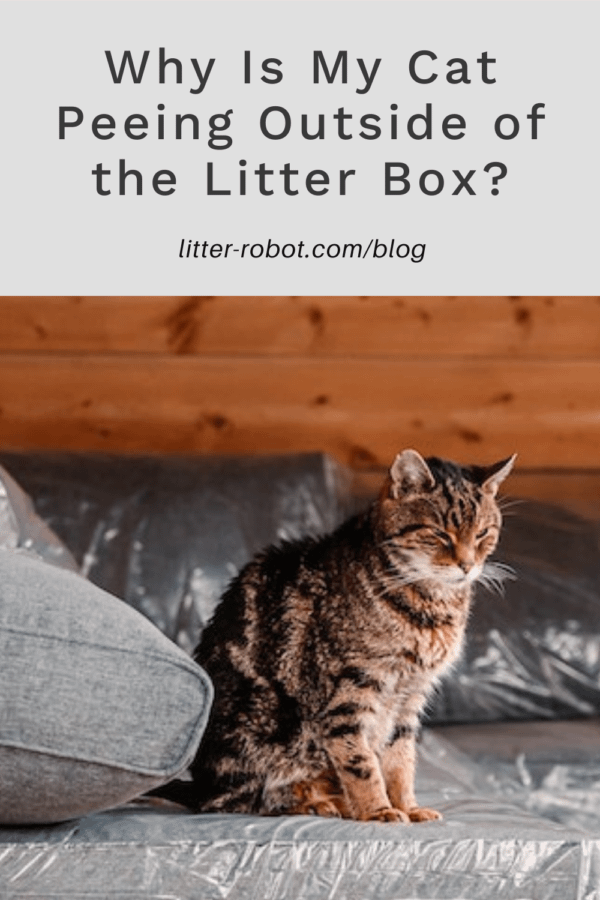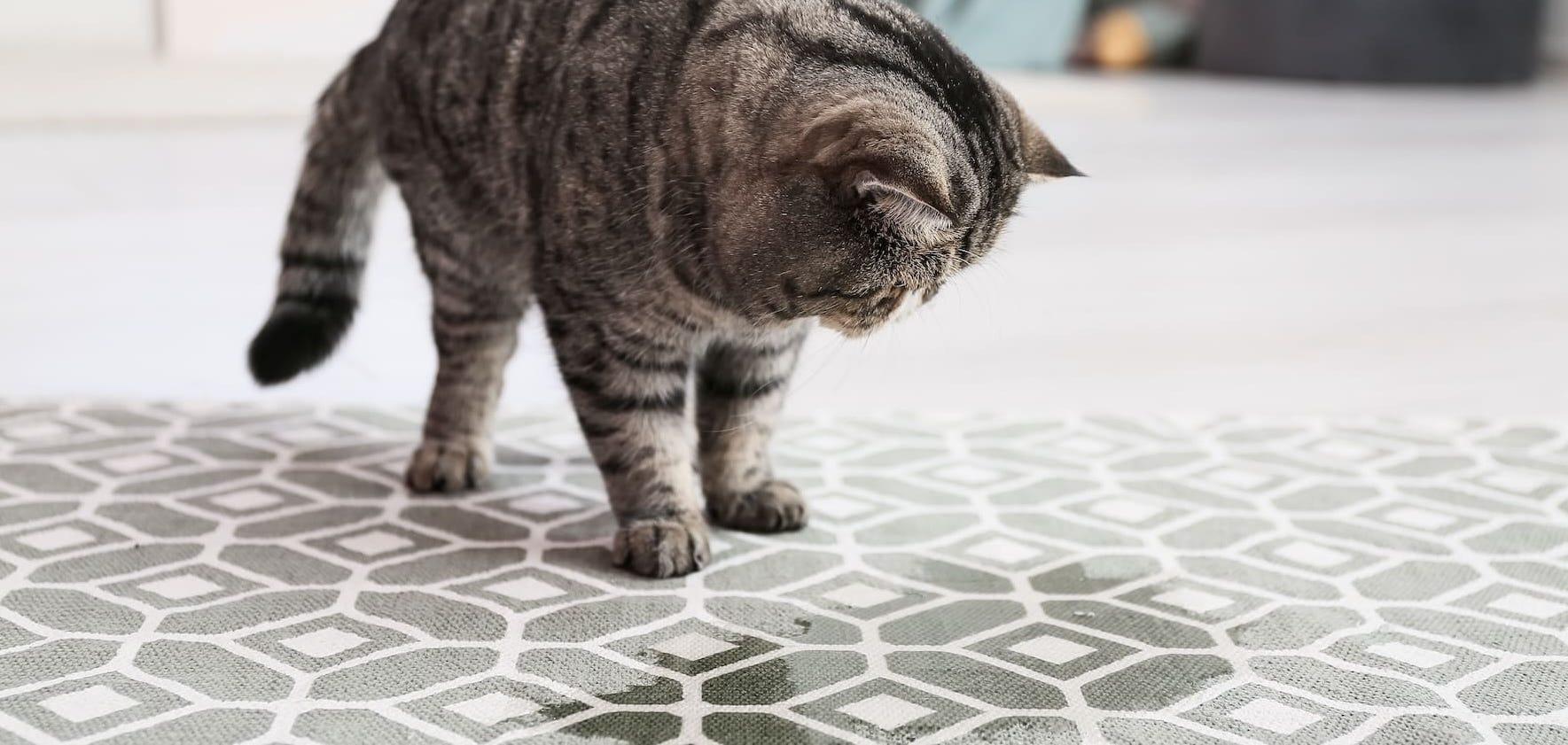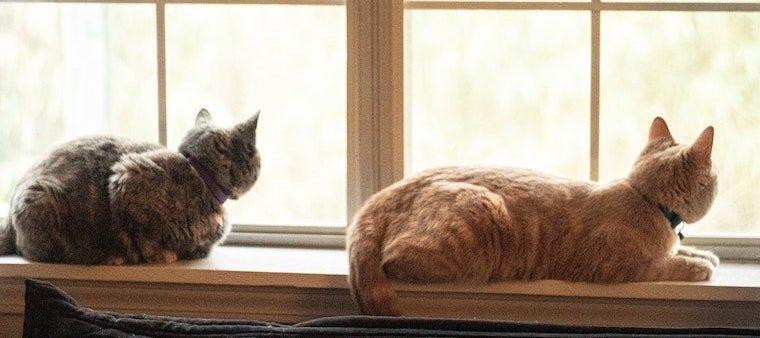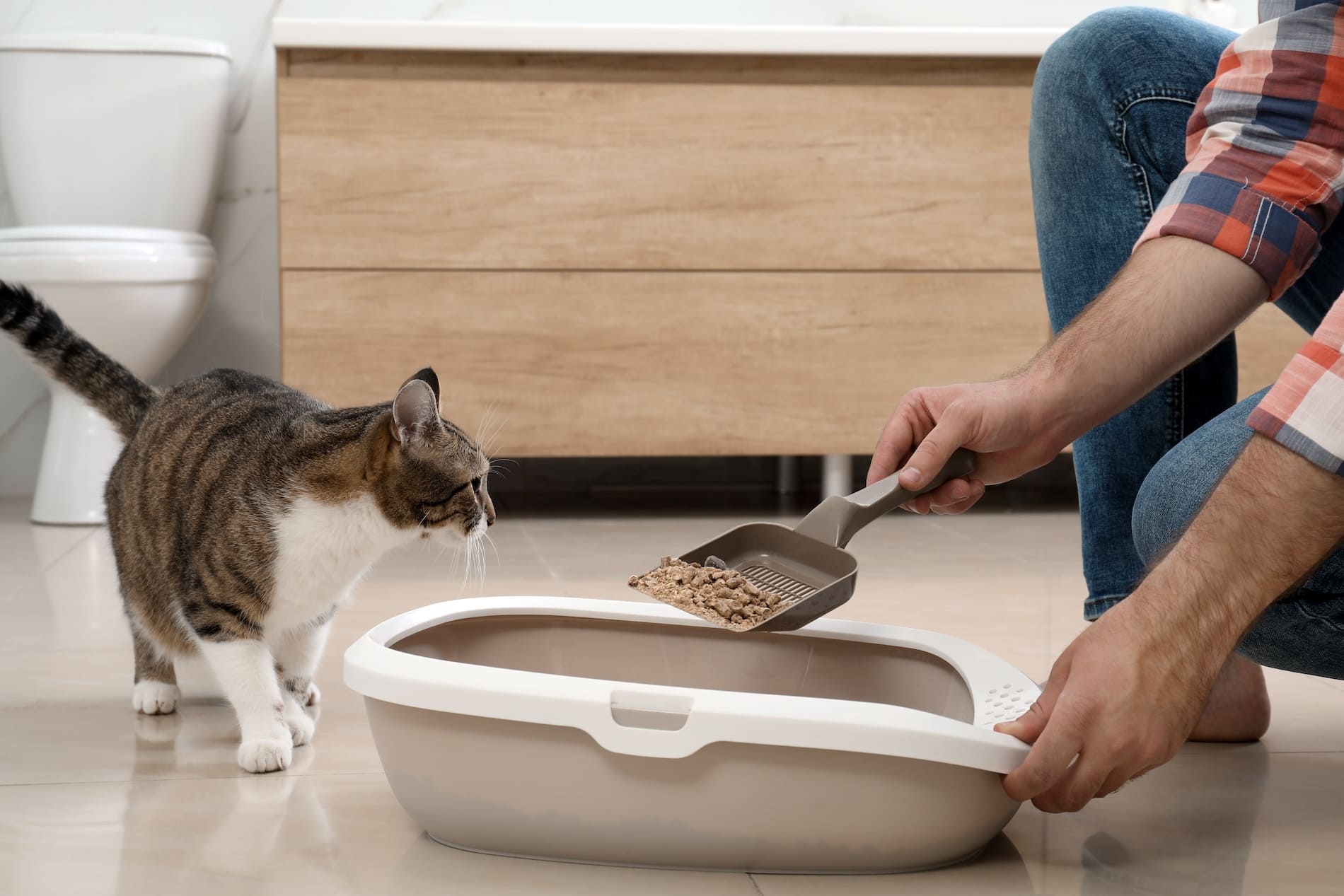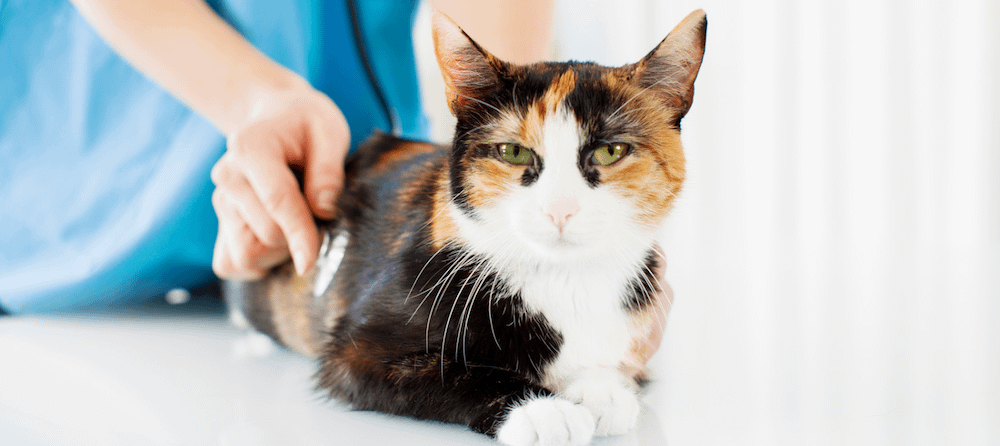Cats peeing outside the litter box can be a frustrating and worrisome issue that many pet parents face. While your first instinct may be to get angry, remember that your cat is not usually peeing outside the litter box to seek revenge against you, although some spiteful kitties can and do. If your cat is suddenly peeing everywhere, there is probably a very good explanation for it! Instead of getting frustrated, try to find the reason behind the behavior. If you’re wondering, “Why is my cat peeing outside the litter box?” our cat experts and a professional veterinarian have the answers.
Top reasons for cats peeing outside the litter box, according to a vet
There are several reasons why your cat may be peeing outside the litter box or even peeing next to the litter box ranging from simple behavioral issues to more complex health issues. Let's dive into why your cat is peeing outside the litter box.
Improper litter box location
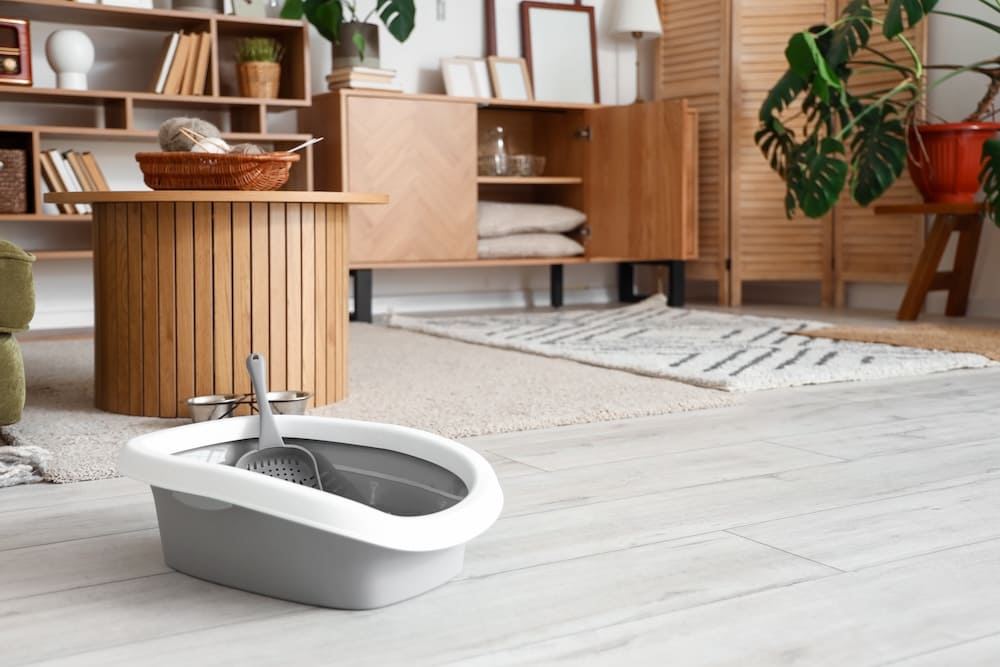
Another problem that may need to be addressed is litter box location.
- If the litter box is too high or in a spot that is difficult to get to, they may be unable to make it to the litter box in time. If your cat is older and has arthritis, this could be a major reason why they are not peeing in their litter box.
- If your litter box is in a noisy room such as the laundry room, next to the washing machine, the HVAC, or the furnace, they may be avoiding it due to noise and heat. Loud sounds may unsettle a cat, and the warmth emitted by a dryer or furnace can intensify the odor of the litter box, potentially causing the cat to avoid it.
- If the litter box is in an area with a lot of foot traffic such as the living room, the entrance, or the corridor. Cats typically prefer quiet and more private spaces to do their business.
- If you have recently moved the litter box, your cat may not like the new location. This can cause your cat to pee on the floor or furniture until the box is in a more suitable place.
With cats, the devil is in the details, and various factors could be causing them to turn away from the box. Regardless of general disposition, any cat can become averse to scented litter, litter box designs such as those with hoods, or having liners, on top of being choosy about how deep the cat litter is.
Dirty litter box
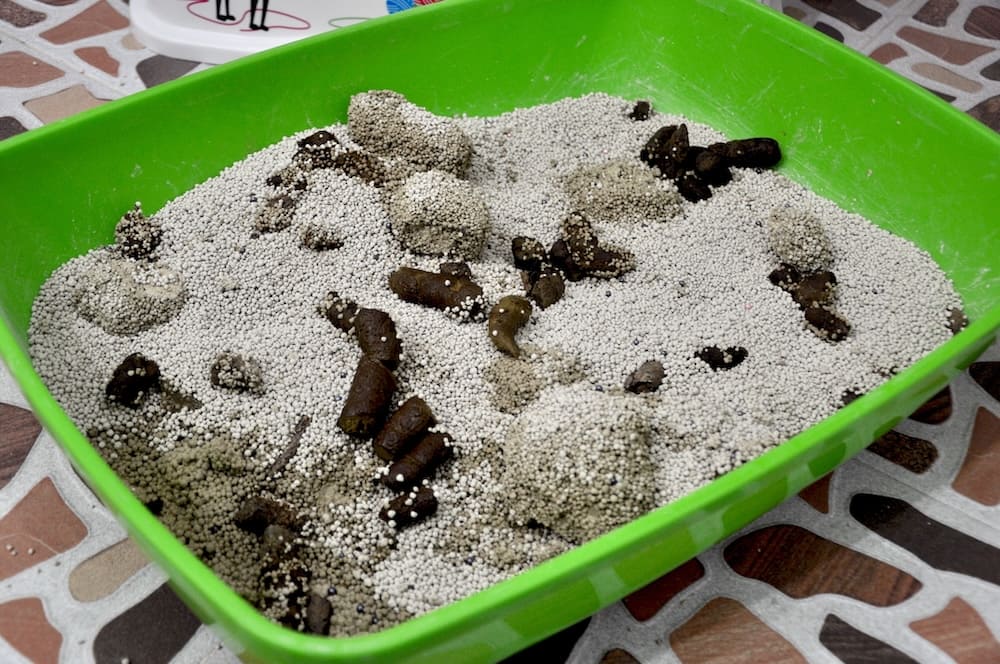
It is important to stay on top of cleaning your cat's litter box. In the same way that humans do not want to use a dirty restroom, your cat will not want to use their litter box if it is filthy. If you haven’t had a chance to properly clean it, your cat may pee next to the litter box instead of inside the box.
Scooping their litter box daily, or even multiple times per day if there is more than one cat in the house, can help ensure your cats continue using their litter box. It’s also important to switch out their litter every few weeks and ensure you are cleaning the litter box simultaneously. Or, use an automatic, self-cleaning litter box that provides a clean bed of litter for every use.
Check out our full litter box guide for more tips to keeping your litter box clean.
Wrong type of litter
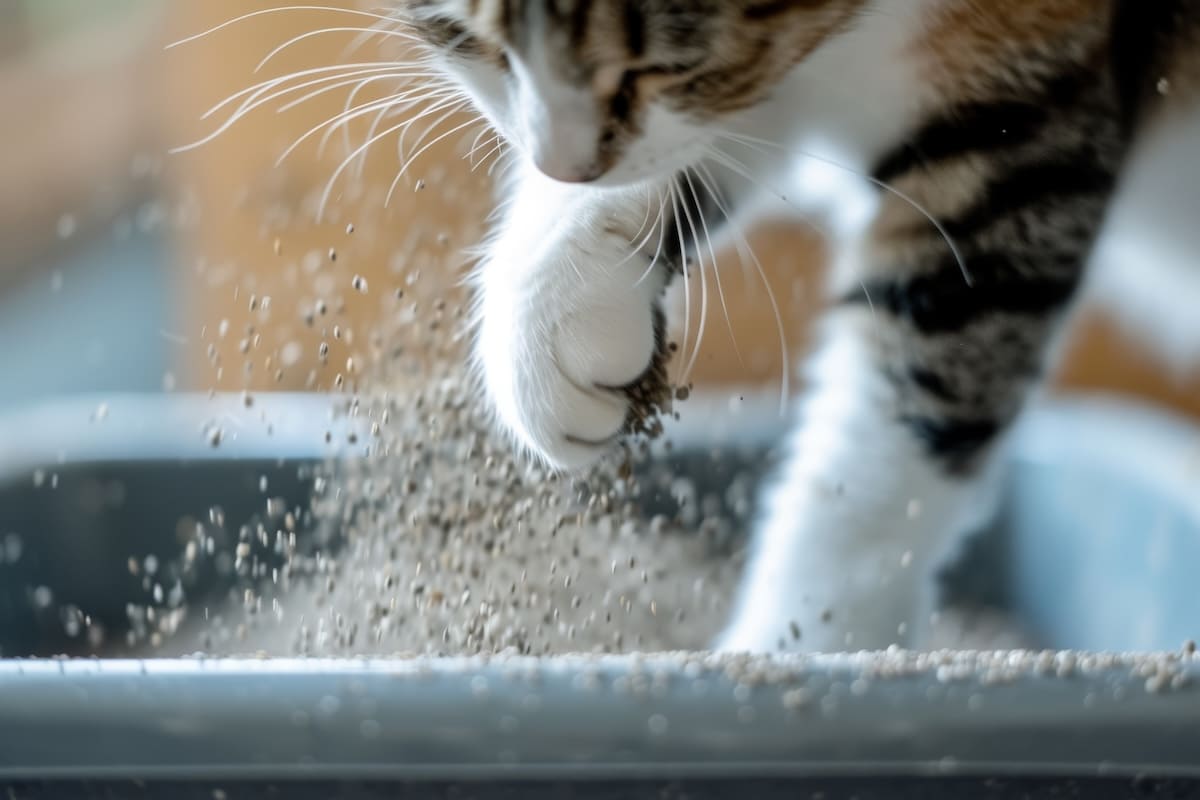
It’s possible your cat may not like the type of litter you bought for them. If you have a kitten that spent time with their mother before coming home with you, it’s possible they learned what type of litter they’d like from their mother. Cats prefer fine, soft textures like clay or silica over pellets due to the large particles.
If you have recently changed to a pellet type of litter, it might also explain why your cat is suddenly peeing next to the litter box.
Luckily, there is a large variety of cat litter alternatives to choose from. You may have to switch several times before finding the best litter for your cat. According to some studies, cats prefer clay-clumping litter with no scent.
Territorial marking behavior
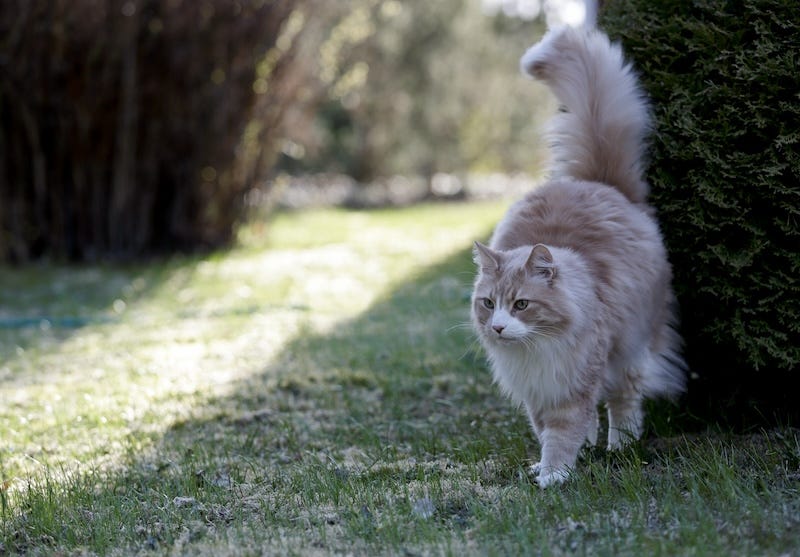
If your cat was using the litter box consistently, but started urinating around the house around seven months of age, he is likely beginning to mature and mark his territory.
When marking, cats usually stand with their tail raised and quivering, backing up to a vertical surface like a wall or furniture. Marking involves spraying a small amount of urine rather than fully emptying their bladder.
Make an appointment for your cat to get spayed or neutered. Spaying and neutering helps control the cat population overall (fewer homeless cats), but it’s also beneficial to the lifespan of a cat who is lucky enough to have a home already. Getting a cat fixed reduces its desire to roam and mark territory (which is a reproductive endeavor), and it may prevent the development of certain types of cancers later in life.
Stress or anxiety
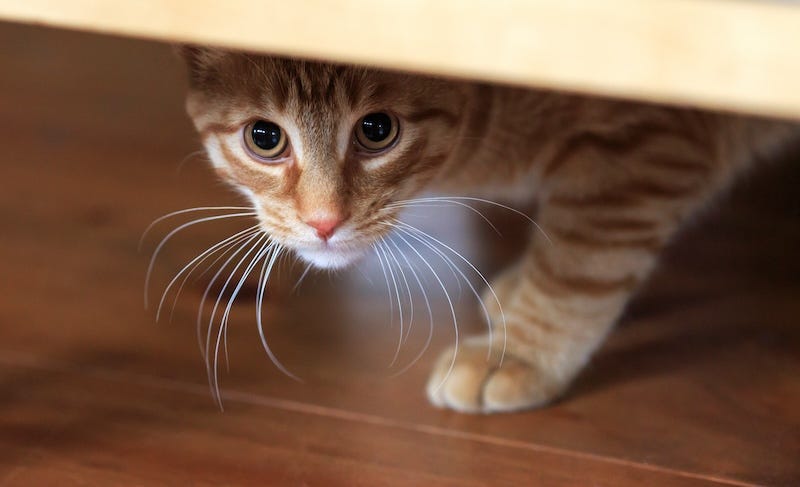
You may wonder, can stress cause a cat to pee outside the litter box? The answer is, absolutely! Any disruption to your cat's everyday routine can cause them to feel stressed or anxious. Common cat anxiety factors include:
- Adding a new pet to your household
- A new baby
- Temperature
- Noise
- High activity near the litter box area
- Other animals
Another factor contributing to stress or anxiety in your cat could be a change in routine. More people are returning to the office after a long period of remote work. A change to their home life can make your cat feel vulnerable—and therefore, they may pee outside their litter box.
If you have multiple cats, it’s also possible that one has dominated the box, prohibiting the other cats from using it. Ensure you have at least one litter box per cat plus one additional to that. For example, you should have at least 3 litter boxes for 2 cats, even if they are bonded.
Make sure that the litter box in a quiet, low-traffic area away from food and noisy appliances. Add extra boxes in different locations to reduce territorial disputes.
Medical issues
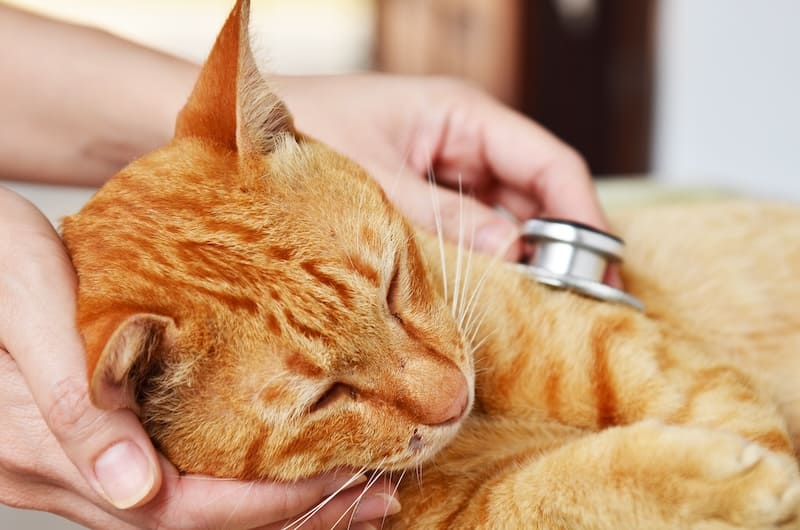
When a cat is peeing outside the litter box, it often indicates something is going on with their health that needs to be evaluated by a vet—especially considering this is probably not normal behavior for your cat. Common medical problems that can result in cats peeing outside the litter box include:
- Urinary disorders
- Urinary tract infections
- Urinary stones
- Arthritis
- Bladder infection
- Bowel disease
Signs of a medical issue
- Peeing next to the litter box – This may indicate that it is painful or difficult for your cat to get into their litter box. Your cat may associate the litter box with pain if they have urinary disease or arthritis. In this case, cats may search for anywhere other than their litter box to go, as long as there is less discomfort.
- Cat suddenly stops using the litter box – If your cat was previously urinating in the litter box normally but suddenly stopped using it, it may also be a sign of a medical issue.
- Behavior change – If your cat seems agitated or visits the litter box frequently without eliminating, infection or some other medical issue could be the culprit.
Whatever the reason, it is important to consult your veterinarian to ensure your cat is medically sound and you should get your cat to your veterinarian as soon as you notice any changes. Symptoms of most of these illnesses can be improved or reversed with proper treatment. Medication and/or dietary adjustments may be all your cat needs to get back in the box.
Why is my cat peeing next to the litter box?
If your cat is peeing just outside the litter box, it may be due to a medical issue or dirty litter box, as addressed above.
Another possibility is that the litter box is too small for your cat. When it comes to the litter box, cats need space to turn around and stand up, and to sometimes dig for the perfect place to do their business. Switching to a litter box for large cats may solve the issue of your cat peeing next to the box.
Furthermore, some cats like to back right up to the edge of the litter box to do their business—and not much can break them of this habit. If you have an open litter box, you may want to switch to a covered litter box. If an open litter box is a must, place it on top of a litter mat that overlaps with the edges of the box for easy cleanup or an open box design with a high back or sides.
How to stop my cat from peeing everywhere
If cats peeing outside the litter box is an issue in your home, follow these tips to stop the incidents:
- Consult with your vet to address any underlying medical issues.
- Use vinegar to clean your cat’s accidents can prevent additional accidents in the same areas. Cats do not like the smell of vinegar, which can help deter them from returning to pee again. However, it will not stop them from having accidents if the underlying cause has not been addressed.
- Stick to routines to the best of your ability and introduce new pets or family members to your cat slowly.
- Keep the litter box clean and scoop daily, or use a self-cleaning litter box.
- Keep the litter level at 2-3 inches deep. If you know that your cat likes to dig around for a while to find the right spot, you may want to add 3-4 inches of cat litter in the box instead.
- Use a litter that your cat likes. According to research, cats tend to prefer natural, unscented cat litter.
- Keep the litter box accessible, and try not to move it if you can help it.
- Place the litter box in a quiet space, far enough away from their feeding area or appliances that make noise (water heaters, dishwashers, AC units), that isn’t heavily trafficked by humans.
- Keep the dog out of the litter box.
- Experiment with your setup until your cat shows renewed interest. If the current litter box is an enclosure, purchase a simple open-top and see if your cat prefers that. For aging pets, try a senior cat litter box. For bigger cats, choose a litter box for large cats to accommodate their size
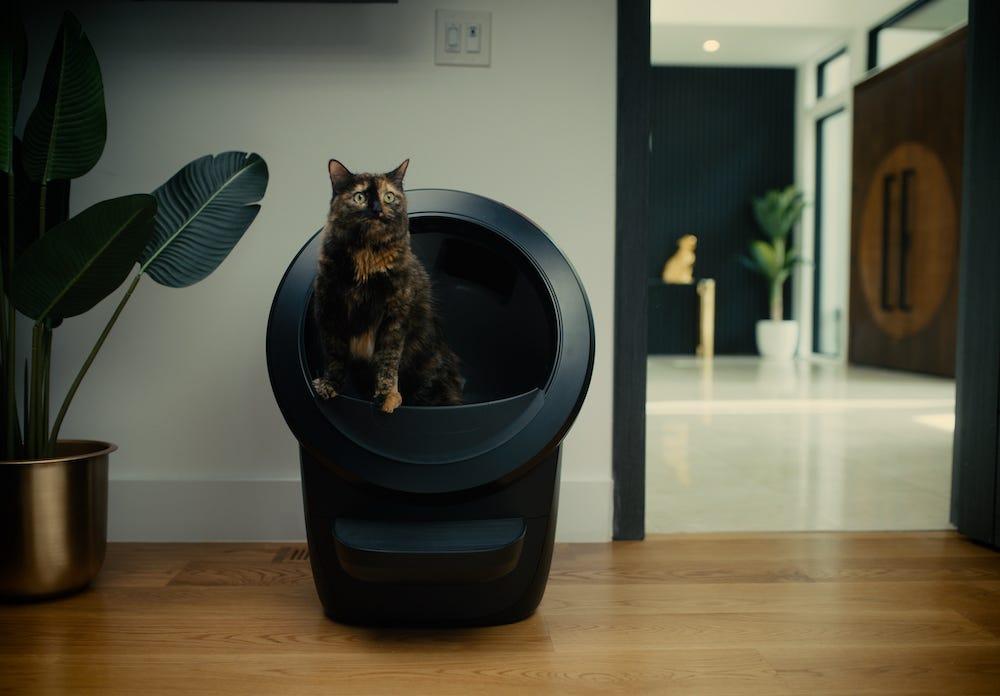
Don’t give up on your cat
While it may be frustrating to deal with cats peeing outside the litter box, don’t give up on them! There is always a reason for your cat's behavior. It can be as simple as cleaning the litter box more often or moving the litter box—or it could be an in-depth issue that requires medical assistance.
However, if it is as simple as keeping the litter box clean, you can always make the switch to Litter-Robot. This automatic litter box does all the daily cleaning work for you; it even alerts you when the waste drawer is full and needs emptying. The self-cleaning litter box Litter-Robot 4 keeps the litter box clean, drastically reduces odors, and makes life easier for you and your cat!
How to get rid of cat pee smell
When cleaning cat urine, It’s important to neutralize the odor with an enzyme-based cleaner which work much better on cat urine than regular household cleaners as enzyme cleaners specifically target the molecules responsible for the cat urine smell. If you have eliminated the underlying cause of your cat peeing outside their litter box, you could also try switching to Litter-Robot, which eliminates waste and reduces litter box odors within minutes.
Avoid using ammonia or vinegar as these may attract cats back to the spot.
Sources:
